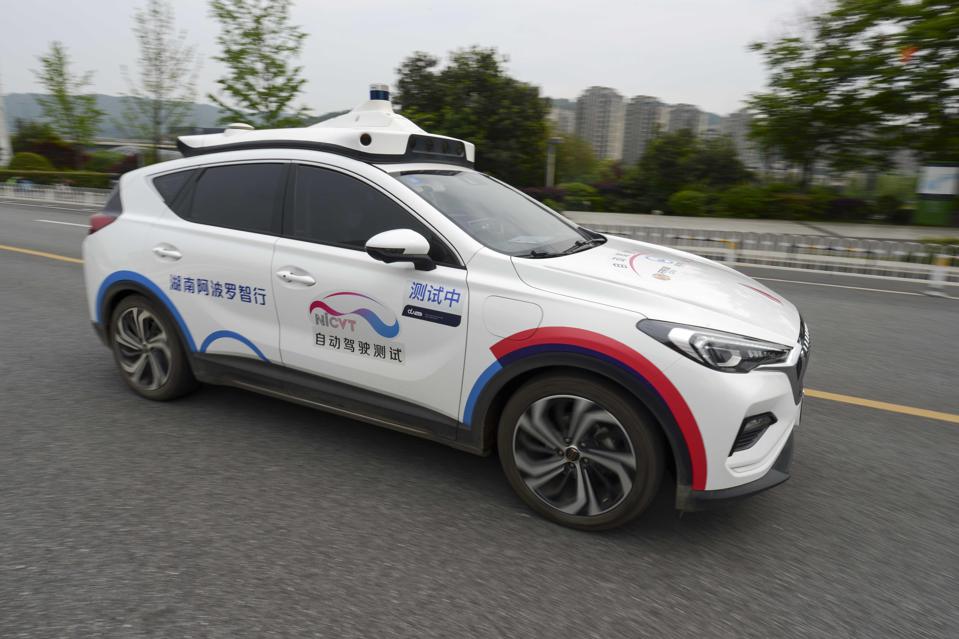
Passenger transportation service Didi Chuxing, which ousted Uber from the Chinese market (by investing in competitors and buying out the Chinese division of Uber), earned about $ 1 billion on trips in 2020. This is remarkable news as the pandemic has battered most of the companies in the market, with Uber continuing to lose money. The company's fourth quarter report will be released only on February 10, and the third quarter report showed a loss of $ 1.1 billion.
Many parallels can be drawn between Uber and Didi, their business and market styles. Didi's earnings news is interesting in terms of how the passenger travel company manages to make money even in difficult times (Didi managed to expand its passenger business in 2020, while Uber and Lyft survived only through food delivery services) ... This, in turn, speaks of the prospects for the profitability of the robotaxi business, on which many players have put many billions.
Uber's inability to make money has led some to speculate that the company is doing poorly. Uber claims it only loses money because it spends a lot on growth. In particular, the company spends a lot on driver subsidies to hire and support as it develops.
The average Uber ride costs $ 2 per mile, although the calculation formula is more complex. Uber takes 50 cents and gives the driver $ 1.5. It costs the driver 30-50 cents a mile to spend, and he puts the rest in his pocket. Uber doesn't do much for that 50 cents - it insures the ride and runs beats on its servers. Even though the company has a lot of one-time costs, the gross margin on that 50 cents should be pretty high - and it's still a big problem with profit right now.
Driving your own car also costs about 50 cents per mile after depreciation and other costs. That's a lot cheaper than $ 2 a mile from Uber. Many analysts believe that the additional cost of driving a robotaxi will be close to these 50 cents, and in fact it may be less, both due to profit and the ability to produce cheap single-seat robotic taxis that will serve 80% of all trips.
But if Uber can't make money by charging you 50 cents a mile at the lowest "cost", then how will a robotaxi make money if you have to pay 20-40 cents of travel expenses for it? Robotaxis want to be seen as an alternative to car ownership and therefore don't want to cost twice as much. They can cost a little more as you don't need to drive, park or service them, but there is a limit.
Didi operates in China and has lower fares than Uber. In Shanghai, you pay about $ 2.30 for a landing and 84 cents per mile. Uber's prices vary from region to region, but in Silicon Valley, you'll pay $ 2.2 for boarding and $ 1.6 per mile plus per-minute and ride-through fees. Prices are lower in China, but Didi makes good money on them too.

One of the many prototypes of Chinese robotic taxis
Like UberX, Didi uses cars owned by drivers. Of course, these cars are cheaper in China, among other factors. One significant benefit is that drivers often don't look at the total cost of using their own car, but only at the additional cost. Basically, drivers take into account the cost of fuel and believe that they have already paid for the car. This is partly true - some cars age over the years, but most age with use. This helps taxi aggregators convince drivers that they are earning more than they are actually earning. Owned commercial vehicle fleets (as well as robotic taxi fleets) cannot afford such a luxury - they must cover all costs.
Didi's average commission is 19%, while Uber's is 25%, but early drivers can pay less. That means Didi pays about 68 cents per mile for the car and driver. This suggests that it is reasonable to assume that robotic taxis are profitable, although we still have no evidence that they will be able to compete on price with owning a private car.
The good news is that it is possible that a robotic taxi will cost less than a regular car. Even though sensors and computers can cost thousands of dollars, you can save on a lot of driving elements - pedals, adjustable seats, mirrors, and more - all more expensive than your target sensor costs. At first, the biggest hurdle will be the billions of investments needed to bring these vehicles to market, but it looks like investors are ready to provide them.
- Russia's first serial control system for a dual-fuel engine with functional separation of controllers
- There are more lines of code in a modern car than ...
- Free Online Courses in Automotive, Aerospace, Robotics and Engineering (50+)
- McKinsey: rethinking electronics software and architecture in automotive
